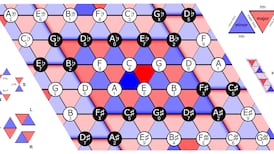Research teams in Belfast and Leeds are developing a cement for a procedure that could benefit young people with spinal injuries
THE UNIVERSITY of Leeds and Queen’s University Belfast have joined forces to develop and test a new type of bone cement for easing pain after spinal fractures. The work has the potential to improve the lives of young people hurt in road crashes.
A minimally invasive surgical procedure, currently used to relieve pain for older osteoporotic patients, could be used for younger patients suffering spinal injuries, according to Dr Ruth Wilcox who heads up the Leeds end of the project.
Patients often have multiple injuries resulting in complex surgery and a long stay in hospital, says Dr Wilcox. The use of the pain-relief procedure can simplify and shorten this process, allowing the patient to get out of hospital and back to work faster.
The surgical procedure involves using a special bone cement that can be injected at the site of a fracture. Importantly, the cement prevents movement of the bone while it heals, something that also reduces pain for the patient.
The special cement has properties closer to those of natural bone and is also “bioresorbable”, disappearing over time as the bone heals.
The cement keeps the bone fragments still for long enough to heal but is eventually removed by the body’s natural regeneration processes. “The big challenge is to create a cement stiff enough to hold the vertebrae together but where the bone will re-grow at the same rate that the cement is resorbed,” says Wilcox.
The cement needs special properties to achieve these aims and “mimics the chemical composition of bone itself”, explains Dr Fraser Buchanan, the project’s principal investigator at Queen’s University.
Current bone cements do not deliver the properties needed and can cause their own problems. Existing treatments result in a permanent cement lump which is much stiffer than surrounding bone. There is evidence showing that some patients with osteoporosis can develop further fractures in bones adjacent to those treated.
“We think this may be because current cements are stiffer than the bone itself, causing an imbalance in the way the spine bears weight,” says Wilcox. “This may increase loading on the neighbouring vertebrae, which can lead to further damage.”
In an attempt to deal with this problem, project researchers have received just under £500,000 (€595,000) from the UK’s Engineering and Physical Sciences Research Council (EPSRC) to go ahead with development.
The project takes an integrated approach, with each of the teams, including Dr Buchanan, Dr Nicholas Dunne and Dr Susan Clarke at Queen’s and Dr Wilcox and Prof David Barton at Leeds, relying on information from the experiments of the other group.
The Leeds team is integrating physical tests and computer models to establish the properties the cement will need to match natural bone. High-impact injuries are recreated in the laboratory by dropping weights from a height on to the sample bones. These fractured bones are then fixed with the new cement for preliminary testing.
Computer models are created to match the individual fractured bone samples. These models can be used to predict the mechanical properties that will be needed for the cement.
The new cement is made with two of the main mineral components of bone (alpha-tricalcium phosphate and hydroxyapatite), which help in matching natural properties, according to Dr Dunne of Queen’s.
The Belfast group have developed ways to define a combination of cement ingredients that will match the requirement fed in from the team at Leeds. The cements are tested for stiffness, for setting properties and for how easily they can be injected.
Alison Jones is a British Science Association Media Fellow on placement at
The Irish Times










